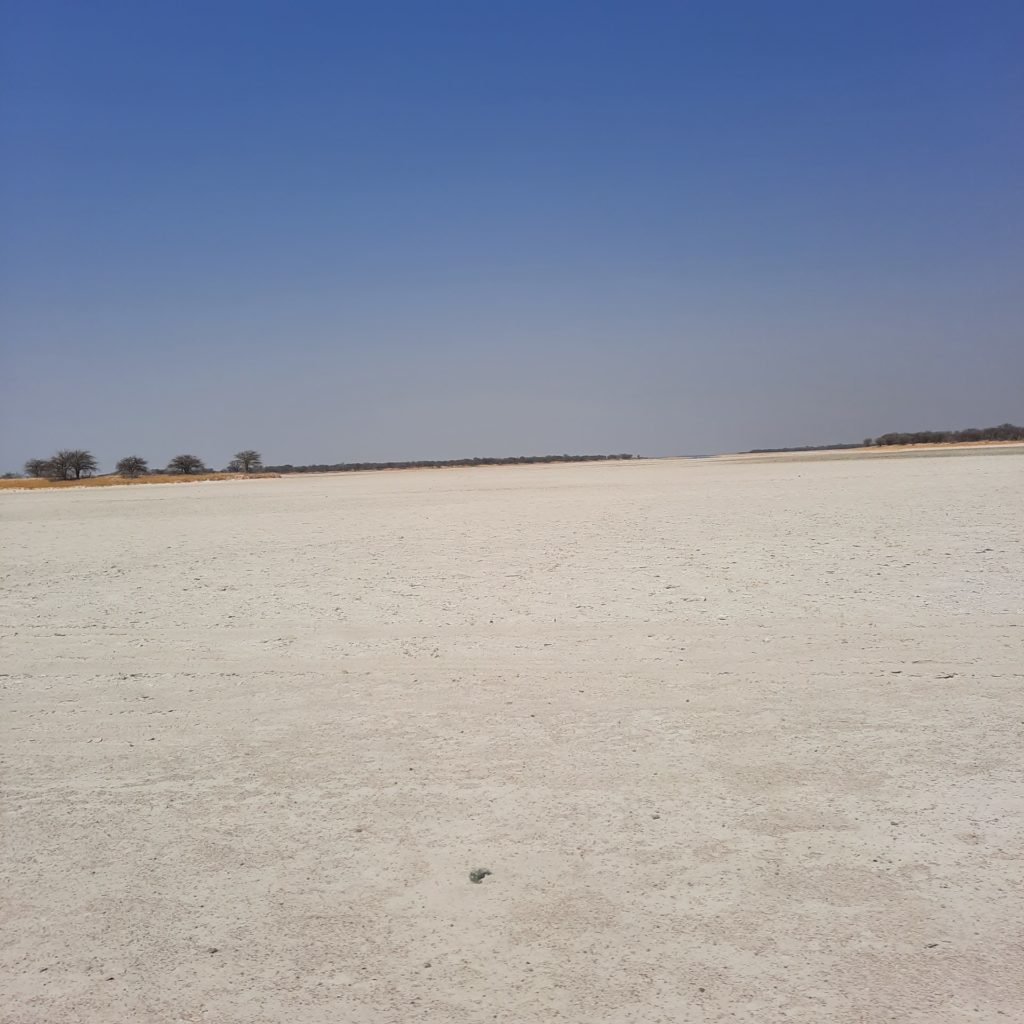Up at 7am again. Leaving South Camp National Park, the only animals we saw were a solitary jackal and, when we were driving through the horrible, deep sand track, several small deer racing in all directions.

Half way back down the track to the exit gate, we turned off to visit Baines’ Baobabs. The 12k track out to the Baobabs took us through the baked white salt pans.
There are a number of pans in and around the Makgadikgadi Pans National Park. Originally the rivers that feed the Okavango Delta once flooded the Makgadikgadi Salt Pans. Due to tectonic movement the waters were diverted away, leaving the vast, dry salt pan.

Baines Baobabs.
When Europeans first started exploring in Botswana, then Bechuanaland, in the late 18th century, Baobab trees were used as landmarks. Thomas Baines was a British landscape painter who first travelled in South Africa as a war artist. He moved on to capturing South Africa’s natural beauty in watercolour.

His work as an exceptional artist, naturalist and geographer was recognised by the Royal Geographic Society, who invited him to join David Livingstone on his second trip up the Zambezi River in 1858. However, they fell out spectacularly.
Later Baines joined James Chapman, a cattle and ivory trader, on a trip to Namibia and then to Victoria Falls. They travelled north by ox wagon. While crossing the large Kalahari Desert they decided to take a break and pitch camp under the shade of a cluster of 7 baobab trees.

The trees provided welcome relief from the heat and inspired Baines to document the scene with a watercolour he titled “A group of Baobab trees on the north-west spruit of the Mtwetwe Pans, May 1862”. The artwork is now housed in England’s archives.

We also enjoyed the shade of the baobabs and took the opportunity to have a coffee/hot chocolate break. Heading back across the hard baked salt we soon joined a narrow sand track, which took us back to the main track. Arriving at the camp gate, I went to fill in the mandatory book with all our details and leaving time. Meanwhile, Dennis reflated the tyres.
Nata
Back on the tar sealed road we headed for Nata. A straight, uninteresting road, apart from 2 areas where we were warned of serious potholes. The road had virtually disintegrated and we drove alongside in the dust.
Arriving in Nata, we decided to top up our fuel. Apparently it is cheaper in Botswana than in Zimbabwe. There was also a convenience store. I thought I might get some more fruit and veg. No such luck. Just alcohol, biscuits, sweets, crisps etc. No proper food.
We continued about 4 kms north of Nata to Eselbe Campsite. A rather quirky place for back packers also. Beside the Nata river. Canoes were provided and if you were brave you could swim in the brown, muddy water, what was left of it. Apparently there are no hippos. In the evening I was advised there were bush-babies hiding in the rafters of the bar area. They come out at sunset. I went to see them, but they were being too reclusive and didn’t emerge while I was watching. The
Views: 55
